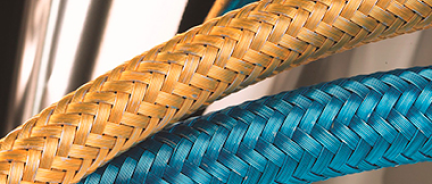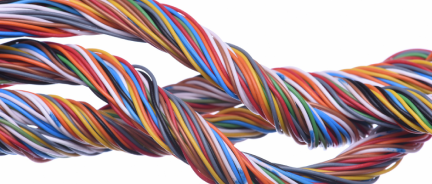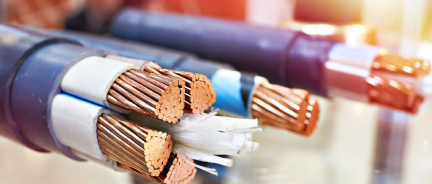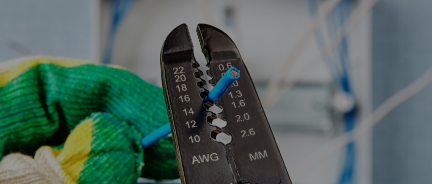Diagrama de cableado de ventilador de techo de 4 cables
Si va a cablear un ventilador de techo con luz, una configuración de 4 cables es la opción más segura y flexible. Este método le brinda el mayor control sobre la instalación del techo.
A continuación se explica cómo cablear el techo exactamente con una configuración de 4 cables:
Cómo cablear un ventilador de techo con una configuración de 4 cables

Comience por desconectar la alimentación desde el disyuntor. Use un comprobador de voltaje para confirmar que no haya cables con corriente.
-
Instale un cable NM-B 14/3 o NM-B 12/3 (tres conductores más una toma de tierra) desde el interruptor de pared hasta la caja del techo. El cable 14/3 es para circuitos de 20 amperios, mientras que el cable 12/3 es para circuitos de 15 amperios. Esto le proporciona:
-
Un cable negro
-
Un cable rojo
-
Un cable blanco (neutro)
-
Un cable pelado o verde (tierra)
-
En el interruptor de pared:
-
Conecte el cable negro caliente (del disyuntor) al terminal común del interruptor.
-
Conecte el cable negro de la caja del techo a uno de los terminales del interruptor. Esto controlará el motor del ventilador.
-
Conecte el cable rojo que va a la caja del techo al otro terminal del interruptor, que controlará la luz del ventilador.
-
Conecte el cable de tierra al tornillo verde del interruptor.
-
En la caja del techo:
-
Conecte el cable negro al cable negro del ventilador (motor).
-
Conecte el cable rojo al cable azul del ventilador (luz).
-
Conecte el cable blanco al cable blanco del ventilador (neutro).
-
Conecte el cable de tierra desnudo o verde al cable de tierra del ventilador y al tornillo de tierra de la caja del techo (si es de metal).
Asegure todas las conexiones con tuercas para cables.
Ahora, su interruptor de pared puede controlar el ventilador y la luz por separado, sin necesidad de cadenas ni controles remotos.
¿Por qué utilizar 4 cables en lugar de 2 o 3?
-
En primer lugar, la configuración de 4 cables permite controlar el ventilador y la luz de forma independiente. No es necesario accionar un solo interruptor para encender ambos a la vez. Con un interruptor de pared doble, se puede encender el ventilador con o sin la luz, o viceversa. Esto no es posible con una configuración de 2 cables, donde un solo interruptor alimenta todo a la vez.
-
En segundo lugar, esta configuración es más segura. El cable de tierra es un requisito del NEC y garantiza un funcionamiento seguro en caso de fallo. Además, el uso de cables de corriente separados para el motor y la luz evita la sobrecarga de un solo conductor.
-
En tercer lugar, facilita futuras actualizaciones. Si desea agregar un controlador de ventilador inteligente o integrar su configuración con un asistente de voz, una configuración de 4 cables le brinda la flexibilidad necesaria. Estos interruptores modernos suelen requerir cargas separadas para el ventilador y la luz. Con un sistema de 2 o 3 cables, necesitaría abrir las paredes y tender cables nuevos para añadir esa funcionalidad.
-
En definitiva, ofrece una experiencia de usuario más limpia y cómoda. Con 4 cables, todo se controla desde la pared.
¿Qué pasa si sólo utilizas 2 o 3 cables?
Con solo dos cables (fase y neutro), el ventilador y la luz siempre deben encenderse y apagarse juntos. Deberá usar las cadenas para controlarlos por separado, lo cual no es ideal, especialmente para techos altos o ventiladores modernos sin cadenas.
Con tres cables (fase, neutro y tierra), solo se recibe una línea de alimentación para el ventilador. Algunas configuraciones permiten controlar el ventilador o la luz de forma independiente, pero no ambos desde un interruptor.
En ambos casos, se pierde la posibilidad de controlar el ventilador y la luz independientemente de la pared, lo que a menudo obliga a depender de cadenas o controles remotos. Si bien esta configuración puede cumplir con la normativa si se conecta a tierra correctamente, limita la posibilidad de instalar interruptores inteligentes o funciones de automatización sin tener que recablear posteriormente.
En Nassau National Cable, puede comprar cables 14/3 NM-B y 12/3 NM-B para la instalación de cableado en el techo.


















